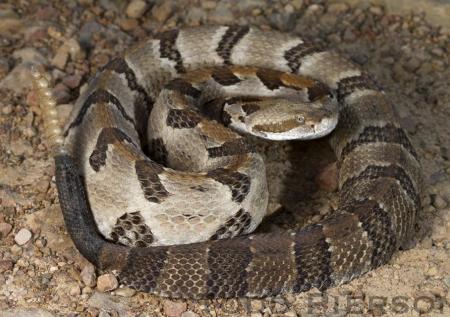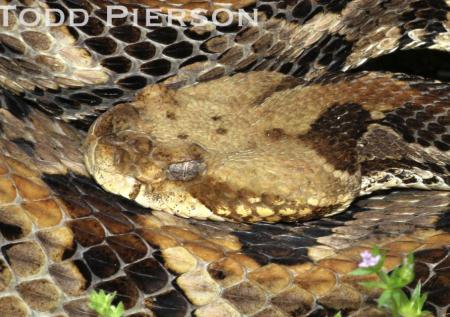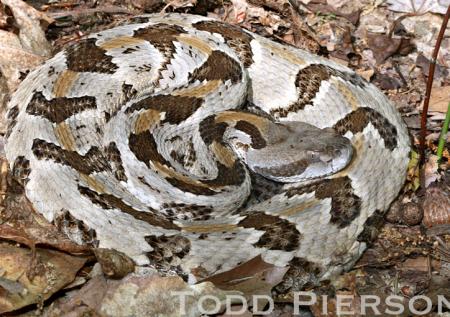Timber Rattlesnake (Crotalus horridus)
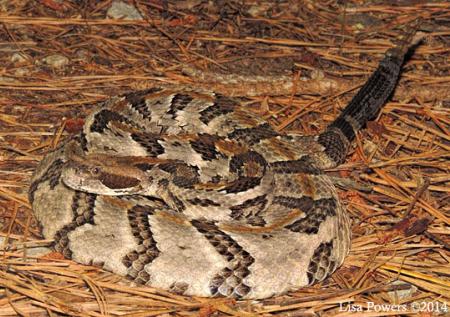
Click a thumbnail below to view the larger image:

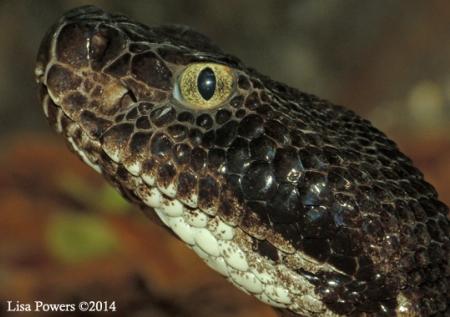
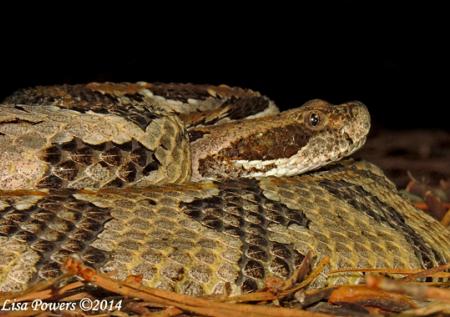
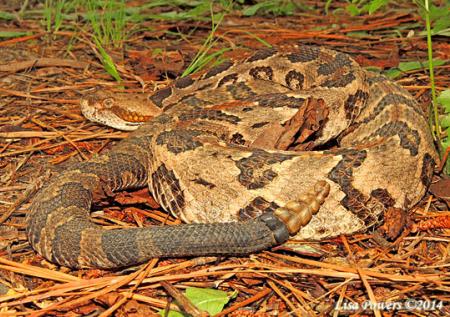
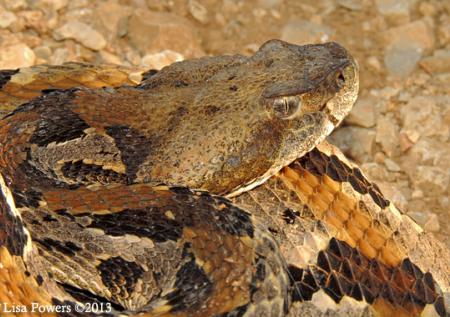
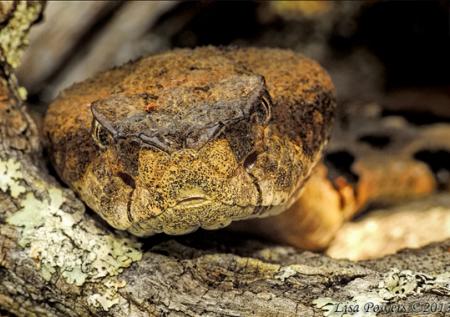

Have you seen a Timber Rattlesnake?
Click the Report Snake button below to reporting seeing a Timber Rattlesnake.
Report Snake SightingAppearance
Timber Rattlesnakes are stocky and noted for the prominent rattle on their tail tip. Their dorsal color can be gray, yellow, brown or green. Most Kentucky Timber Rattlesnakes are patterned with dark crossbands or chevrons that run along the back. However, some Timber Rattlesnakes are completely black. The belly is light in color with black dots. Timber Rattlesnakes have keeled scales, a single anal plate and facial pits.
Size
Timber Rattlesnakes are the largest venomous snake in Kentucky. Adults can reach up to 5 feet in total length, although most adults range from 2.5 to 3.5 ft.
Habitat/Range
Although once found statewide, Timber Rattlesnakes are currently restricted to heavily forested areas in Kentucky. Populations are not known to occur in the Inner Bluegrass Region and northern Kentucky. In addition to forests, these secretive animals prefer rocky outcrops, ridgelines and bluffs, especially on south and southwest facing slopes. In Kentucky, Timber Rattlesnakes hibernate individually in stump holes, abandoned mammal burrows or rock crevices.
Natural History
Timber Rattlesnakes have a unique natural history. Females may take up to 6 years to reach maturity. Live young are born in the late summer or early fall, and females generally have babies every 2-3 years. The new-born babies often stay with the mother for several weeks after birth. Timber Rattlesnakes can live 25 or more years in the wild. Because of their late maturing and infrequent reproduction, this life history strategy makes them incredibly susceptible to human persecution and habitat destruction.
Notes/Miscellaneous
Timber Rattlesnakes are a true sign of wilderness. In Kentucky, these secretive and nonaggressive animals most frequently occur in areas with low human population densities. Because of their rarity, Timber Rattlesnakes are considered a “Species of Greatest Conservation Need” by Kentucky Department of Fish and Wildlife Resources.
Supplemental Images
